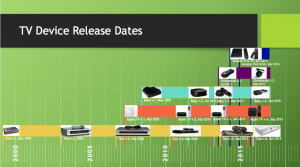The FCC recently released a “fact sheet” on its new proposal regarding video set-top boxes. Despite reports that it reflects a compromise, and because the final rules are unlikely to be unveiled before the Commission votes on September 29, the new proposal raises additional questions.[1] In particular, the new proposal aims to create a “standard license governing the process for placing on app on a device or platform.” The document explains that a
standard license will give device manufacturers the certainty required to bring innovative products to market. Programmers will have a seat at the table to ensure that content remains protected. The license will not affect the underlying contracts between programmers and pay-TV providers. The FCC will serve as a backstop to ensure that nothing in the standard license will harm the marketplace for competitive devices.
These four sentences imply that such a license would be simple, but it is difficult to imagine how that could be so.
First, the FCC appears to believe it can separate devices, content, and distribution and that the standard license “will not affect the underlying contracts.” Given the myriad, detailed existing contracts it seems unlikely that the FCC can make such a guarantee. The statement assumes, for example, that existing contracts between programmers and distributors never specify the terms on which the content can be used on different devices, which seems unlikely. More generally, if devices, content, and distribution all affect each other, then rules regarding one are likely to affect the other.
Second, the FCC appears to weigh only competition in the “device market” when it says it wants “to ensure that nothing in the standard license will harm the marketplace for competitive devices.” As an initial matter, with Roku, Amazon Fire, Chromecast, Apple TV, and others readily available, one might argue that the device market is already competitive. Device manufacturers appear to have had few problems in bringing “innovative products to market,” as illustrated in the chart below.
More importantly, the FCC does not explain why promoting competition in the device market is necessarily more important than investment and innovation in other areas of the video market. Consider, for example, the general opposing arguments. The FCC asserts that its proposal will increase device competition, while others argue that it will decrease incentives to invest in content and new distribution models. The claims are not incompatible, so assume for the sake of argument that both are true. The fact sheet implies that the FCC is willing to accept less investment on the content and distribution side resulting from the standard agreement for any amount of increased device competition.
Finally, while it is not possible to define an accurate framework for analyzing the proposal until the FCC releases it, the fact sheet suggests some possible analogies. For example, the standard license paragraph sounds as if it is describing something akin to a “duty to deal” or a standard essential patent, both of which give competitors access to something that would otherwise be proprietary. What the paragraph does not acknowledge is that standard essential patents have been the subject of extensive litigation and research on a number of areas, including price. Regardless of whether one believes such a standard is potentially appropriate in the case of set-top boxes, the FCC’s paragraph makes this standard license sound simple, but experience suggests that it is likely to be complicated and costly.
To be fair, what matters are the details in the actual proposal, not the arguments laid out in a “fact sheet” intended for propaganda purposes that has no official legal or regulatory meaning. Nevertheless, it provides insight into the Commission’s view of the video market. A major rule like the one the FCC appears to be proposing requires rigorous evaluation. Hopefully the FCC recognizes that need and will carefully consider possible effects on the entire video marketplace before passing the rule.
[1] Not the least of which is why the FCC thinks that projections of future events in the face of uncertainty are “facts.”
Scott Wallsten is President and Senior Fellow at the Technology Policy Institute and also a senior fellow at the Georgetown Center for Business and Public Policy. He is an economist with expertise in industrial organization and public policy, and his research focuses on competition, regulation, telecommunications, the economics of digitization, and technology policy. He was the economics director for the FCC's National Broadband Plan and has been a lecturer in Stanford University’s public policy program, director of communications policy studies and senior fellow at the Progress & Freedom Foundation, a senior fellow at the AEI – Brookings Joint Center for Regulatory Studies and a resident scholar at the American Enterprise Institute, an economist at The World Bank, a scholar at the Stanford Institute for Economic Policy Research, and a staff economist at the U.S. President’s Council of Economic Advisers. He holds a PhD in economics from Stanford University.



